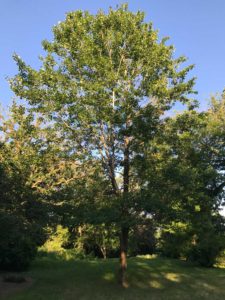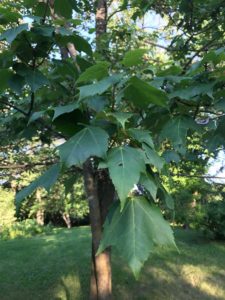Native To State: YES
Naturally Occurring: NO
Description
Appearance: Betula alleghaniensis is a deciduous tree known for its peeling, golden-brown bark and triangular leaves.
Leaves: The leaves are simple, serrated, and triangular in shape.
Bark: The bark is golden-brown and peels into thin, curly strips.
Fruit: It produces small, winged nutlets.
Habitat: It is commonly found in moist woodlands and along streams.
Distribution: Yellow birch is native to North America.
Occurance
Two specimens were planted in large pasture marsh in 2016

































